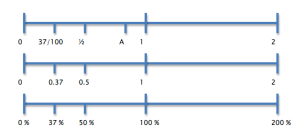From Swan’s paper (available below):
Teaching is more effective when it …
-
builds on the knowledge students already have;
-
exposes and discusses common misconceptions
-
uses higher-order questions
-
uses cooperative small group work
-
encourages reasoning rather than ‘answer getting’
-
uses rich, collaborative tasks
-
creates connections between topics
-
uses technology in appropriate ways.
Types of teaching activities that can achieve these principles:
- Classifying mathematical objects
- Interpreting multiple representations
- Evaluating mathematical statements
- Creating problems
- Analysing reasoning and solutions
But what are the precursors to this? Swan talks about the challenge of ensuring all group members participate, and some ways to encourage this, but reflecting on what I’ve heard from other teachers in the past few weeks, I think we need to take another step back first.
The challenge that I’ve seen and heard from several teachers is to create the conditions within their classroom that allow productive collaborative work, rather than students spending group work time chatting about something other than maths.
Those classes that have used group work time productively have all had some common features:
- The level of challenge is just right – students want to do the work because they want to find a solution to the problem the teacher poses.
- There is a balance between letting students spend quality time on a difficult problem, but not letting activities run for so long that attention wanders.
- Most importantly, the teacher has a good, professional, mutually respectful relationship with the class.
These points are hard as a teacher to achieve, but worth working on when I get to school in September. The last one, particularly, is what I keep coming back to – mutual respect and a professional relationship with the class are absolutely central to good teaching.
Another reflection is that the stuff Swan is suggesting is tough for students too. That’s part of the point of his activities. But if my classes are to have success with strategies like this, I need to scaffold them through Friday skills lessons or similar. Asking students to undertake activities like this when they’re not used to them will take time and effort on both our parts.
Swan: Collaborative Learning





